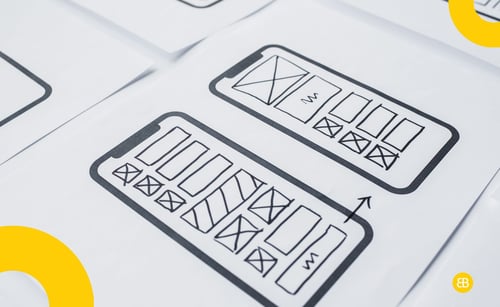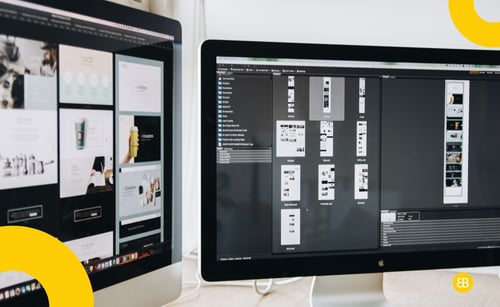Table of Contents
Avoid the $50K Mistake and Build What People Actually Want
🚀 You’ve Got an Idea. But Is It the Right One?
If you're an ambitious founder, you've probably spotted a problem, mapped out a few features, and thought:
This could be big.
Before you spend tens of thousands building an MVP, there’s one crucial step most skip:
Validating whether it’s truly worth building.
This guide will show you how to:
- Identify real problems worth solving
- Validate your app idea without writing code
- Run a focused 7-day validation sprint
- Avoid the most expensive mistake in early-stage startups
- Use smart tools like ChatGPT, Value Proposition Canvas, and Business Model Canvas
- Know when to build — and what to build first
1. The $50K Mistake: Why Founders Fail Before They Start
Too many founders skip validation and rush straight into development. They invest thousands, engage freelancers or agencies, spend months crafting a product — only to launch to crickets.
This is what we call the $50K mistake:
-
You assume your idea is valuable — without proof
-
You build based on opinion, not insight
-
You find out too late that no one actually wanted it
What It Looks Like:
-
You build something based on gut feeling
-
Users don’t sign up, or don’t use it after launch
-
You burn through $20K, $50K, even $100K — and wonder what went wrong
You didn’t fail because you couldn’t build. You failed because you built too soon.

2. What Validation Really Means (And What It’s Not)
Validation IS:
-
Talking to users about their problems
-
Testing demand before building
-
Gathering real feedback and adjusting fast
-
Looking for action: waitlists, pre-orders, demo requests
Validation ISN’T:
-
Asking mates if it’s a good idea
-
Building a prototype “just to see”
-
Launching and hoping people come
If they’re not taking action, they’re not that interested.

3. Benefits of Validating a Startup Idea
Validating your startup idea gives you clarity before you commit serious time or money. It helps you test whether your problem is painful enough, whether people care about your solution, and whether you're speaking to the right audience. More importantly, it lets you adapt quickly — before you over-invest in something that doesn't resonate.
When you validate early:
-
You avoid building something nobody wants
-
You uncover real user needs and language
-
You shape a product roadmap based on real-world feedback
-
You gain the confidence (and data) to pitch, build, or pivot
The goal isn't just to prove you're right — it's to learn fast, so you build smart.
Why Validation Matters:
Validation matters because it prevents wasted effort. It gives founders a chance to test their assumptions early, reduce risk, and uncover the best path forward. Whether you're building a SaaS app, offering a service, or launching a niche product, validation brings clarity. It helps ensure you're solving a meaningful problem — for the right people, in the right way. And in today’s crowded landscape, that clarity is your competitive edge.

4. No Idea Yet? Here’s Where Great Startups Start
You don’t need a billion-dollar idea — you need a real, painful problem worth solving.
Many of the best startup ideas don’t come from a flash of brilliance — they come from lived experience. Frustrations. Repetitive tasks. Conversations where people say, “I wish there was an easier way to do this.”
Here’s where to look:
5 Proven Sources of Great Startup Ideas:
| Source | What to Ask | Example |
|---|---|---|
| Scratch Your Own Itch | What annoys you regularly? | Notion’s founders hated disconnected note tools |
| Industry Insider Problems | What’s outdated or slow in their daily work? | Freight operators still using paper bookings |
| Work Friction | Where are teams hacking solutions together? | HR builds internal onboarding tool → SaaS |
| Emerging Trends | What’s changing fast? AI, remote work, creator tools? | Loom took off with async remote teams |
| Niche Improvements | Can we do this better or more focused? | Calendly-inspired tools for coaches, salons |
Ask 5 people: “What annoys you at work that still hasn’t been fixed?”
5. Should You Validate Your Idea? (Hint: Yes, Almost Always)
Validation is your early warning system. It stops you from wasting time and money on a product no one wants. By testing your assumptions with real users, you uncover what matters, what resonates, and what to avoid. It’s not just about preventing failure — it’s about building with confidence.
Whether you're launching a SaaS app, marketplace, or digital tool, early validation helps you shape a product people actually need — and are willing to act on.
You need to validate if:
-
You haven’t spoken to real users
-
You’re unclear on the problem
-
You’re guessing about interest or demand
Myth vs Reality:
| Myth | Reality |
| "My friends like it" | Friends ≠ paying customers |
| "Others are doing it, so it’ll work" | Execution > idea |
| "I have to build to test" | No — you can validate without building |

5. The 5-Step Validation Framework
Step 1: Clarify the Problem
What’s the real pain? Who has it most? Be specific.
Example: “Help property managers check in guests without being onsite.”
Step 2: Talk to 10–15 Potential Users
Ask open questions:
-
“What’s hard about X?”
-
“How do you solve it now?”
-
“What would ideal look like?”
Look for pain, frustration, and energy.
Step 3: Build a No-Code Test
Create a simple landing page or signup form:
-
Problem statement
-
Your proposed solution
-
CTA: “Join Waitlist” or “Get Early Access” Tools: Carrd, Notion, Webflow, Typeform
Step 4: Share It Widely
Get it in front of your audience:
-
Reddit, Slack groups, Twitter, LinkedIn, Facebook communities
-
People you interviewed
Step 5: Measure Action, Not Compliments
Look for:
-
Email signups
-
Pre-orders
-
Replies asking for more info
-
Demo requests
If they’re taking action, you're onto something.

6. Use ChatGPT to Validate Faster
ChatGPT is your co-pilot in early validation. Try it for:
-
Simulating user interviews
-
Drafting landing page copy
-
Brainstorming value propositions
-
Anticipating objections
-
Ideating lean experiments
🔎 Prompt: “Act like a startup founder. What concerns would you have about a pricing tool for freelancers?”
🧰 Want more? Download the ChatGPT Prompt Pack for Validation
7. Your 7-Day Idea Validation Sprint
| Day | Action |
| Day 1 | Define problem and audience |
| Day 2 | Draft your Value Proposition Canvas |
| Day 3 | Create a landing page with signup form |
| Day 4 | Interview users or send surveys |
| Day 5 | Share landing page publicly |
| Day 6 | Analyse real signals |
| Day 7 | Decide: refine, pivot, or build MVP |
8. What If No One Cares About Your Idea?
Good. You’ve just saved yourself time and money.
What to Do Next:
-
Refocus your problem statement
-
Pick a sharper audience segment
-
Rewrite your message (is it compelling enough?)
Sometimes it’s not the idea — it’s the pitch.
Validation doesn’t kill your dream. It upgrades it.
9. Validation vs MVP: Which Comes First?
MVP = a small version of your solution. Validation = testing whether a solution is needed at all.
Always validate first. MVP comes after the light turns green.
Download our 1-Page Validation Template here
10. Real Founder Signals: What Helped Them Know It Was Worth It?
We asked 100+ founders: What gave you the confidence to move forward?
Top signals:
-
People pre-paid for early access
-
They got waitlist signups quickly
-
The same pain came up in every interview
-
They got interest without even building anything
“We spoke to 15 operators. 12 joined our waitlist. 5 paid $50 each. That’s how we knew.”

11. How Validation Helps You Raise Money or Find a Co-Founder
Validation = traction. Even if early.
Use it in your pitch:
-
Problem interviews (slide 1–3)
-
Conversion rates (traction slide)
-
User quotes or testimonials (demo slide)
-
Pre-orders, waitlists, engagement numbers
This builds credibility faster than any pitch deck alone.
12. Recap: What You Now Know
-
Building comes after validation
-
You don’t need code to test your idea
-
ChatGPT, VPC, and BMC are your allies
-
Measure behaviour, not compliments
-
Clarity beats perfection
Great founders fall in love with the problem — not their first product idea.
13. Want Expert Help Validating Before You Build?
We help ambitious founders test ideas, talk to users, and map smart MVPs.
👉 Check out Idea Validation Packages from EB Pearls
What you’ll get:
-
Real feedback on your idea
-
Validation steps tailored to your audience
-
Guidance on your best next move — build, refine, or pivot
Let’s avoid the $50K mistake together.
👉 Book your free discovery session

Akash, COO at EB Pearls, blends technical expertise with business acumen, driving the creation of successful products for clients.
Read more Articles by this Author